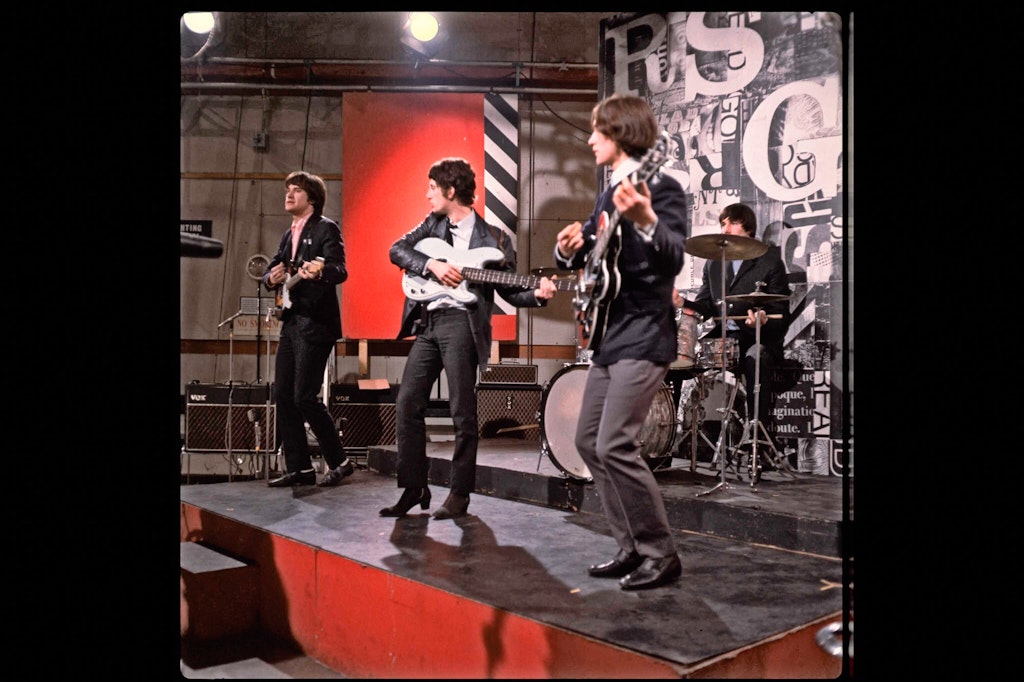Ghosts of Christmas past
Why Brits love their yuletide horror
With Christmas trees popping up, twinkly fairy lights coming out and Nat King Cole’s treacly rendition of “Chestnuts Roasting On An Open Fire” drifting across every public space, my mind always turns to one thing. Death.
Before kind people start linking me to various hotlines and support services, I don’t mean personal death — though I do think we all ponder our mortality around this time of year. Up a notch on the tree of life, down a notch on the trouser belt and, if party season goes really well, a notch or two scratched into the bedpost.
Small screen productions endure beyond their limited budgets
Rather, I find myself drawn to the only genre, apart from comedy, that feels appropriate for this time of year. That is horror — specifically, British folk horror (the gory American stuff trotted out at Halloween does nothing for me).
These films and television programmes operate in a world of sleeted citadels and misty moorland, candlelit crypts and lurching cadavers, desolate graveyards and village inns, where weary travellers rest for a moment before continuing on their lonely journey into nightmare and torment. The atmosphere is usually dark and thundery, but not always: A Warning to the Curious (arguably the best instalment of the BBC’s 1970s “ghost story for Christmas” strand) is made all the better by the parched, sun-drenched landscape of Suffolk in July. The Two Faces of Evil, a sultry tale of possession from the Hammer House of Horror television series, pulls off the same trick.
It’s impossible to talk about British horror without mentioning Hammer, much as it is impossible to talk about British humour without mentioning the Carry Ons. They are two sides of the same coin: the fun factory and the fright factory. Low budget and quickly produced, they feature an informal repertory company of performers, and scripts knocked off by pipe-smoking hacks in six weeks or less. We delight when we see booming, baroque Christopher Lee or birdy, emaciated Peter Cushing (an incredibly sweet man in real life, but blessed with a face like a vampire bat’s tombstone) in the same way we delight at Sid James’ “yak yak yak” laugh or Kenneth Williams sashaying on. It is fitting, I think, that the best send up of the Hammer franchise is Carry On Screaming — and Screaming is quite possibly the best Carry On.
Perhaps it’s because humour and horror rely on the same techniques: shock and surprise, suspense, the pull-back, the reveal — even deliciously camp costumes. There is a reason why The League of Gentlemen — Mark Gatiss, Steve Pemberton, Reece Shearsmith and Jeremy Dyson — was so fascinated with both genres and able to blend the punch of each tradition to achieve laughs and scares simultaneously. I particularly like the episodes with audience reactions; the melding of the laughter with the grotesque makes for an almost uniquely strange and disorienting viewing experience.
The halcyon period for me was the 1970s, when numerous small screen productions mixed elements of horror and sci-fi to create programmes that endure in power and imagination beyond their limited budgets and studio bound sets. Everyone thinks of Tom Baker’s first three seasons of Doctor Who — when disembodied brains ranted in tanks of green goo, reanimated cadavers strangled former family members to death, and ventriloquist’s dolls kidnapped virgins to suck out their life essence. All at Saturday teatime!
Horror, like comedy, is about the human soul
Plenty of even more adult fare was produced. Beasts by Nigel Kneale — who also gave us Quatermass and The Stone Tape — presents a visceral deconstruction of humanity’s animalistic tendencies. Perhaps the best episode, “Baby”, has to be seen to be fully appreciated. In a brooding tale, exploring themes of fertility and abortion, a young couple finds a strange mummified foetus in the wall of their new cottage. What follows is moving, thoughtful and ghastly — in a play that treats its audience with intelligence and respect, building to an unforgettable and surprisingly well-realised crescendo.
It makes sense that we are attracted to this sort of material at this time of year. The dark underbelly of Christmas — the supernatural echo that pulsates beneath the traditional Christian festival — has been present since the modern celebration was layered over its Pagan roots. Witchcraft and wizardry, murder and malevolence, these ancient, visceral concepts tweak our spirit and subconscious in the same way as a good joke. We can’t resist them. Just as we can’t resist, when surrounded by carols and candles and incense, being moved by the nativity of Christ.
Who, if alone in a forest or a graveyard, couldn’t help feeling a bit scared? Who wouldn’t wonder just what creeps and crawls — and feeds — in the darkness? Professor Richard Dawkins and Professor Alice Roberts, and other tiresome intelligent people, would simply chalk all this up to an evolutionary impulse. Maybe that’s true, but I like to think it goes deeper than that. Horror, like comedy, is about the human soul and human reaction: laughter and screams, in the context of creativity and imagination, are more for me than a simple chemical process.
It is a pity that folk horror is a genre in decline. As our cultural sphere has atomised (in film and television, at least, if not in reality), so the shared references required to make these genres sing have slipped from favour.
There is still much to recommend these old tales, these old fears. So treat yourself this Christmas to all the good things: trees, and tinsel, and … terror!
Enjoying The Critic online? It's even better in print
Try five issues of Britain’s newest magazine for £10
Subscribe














